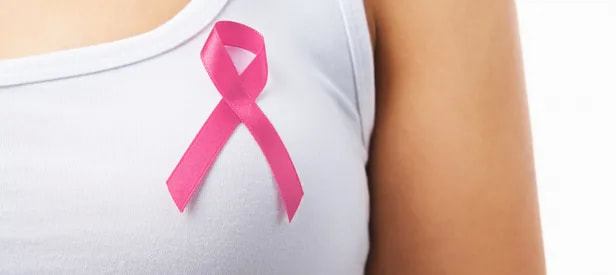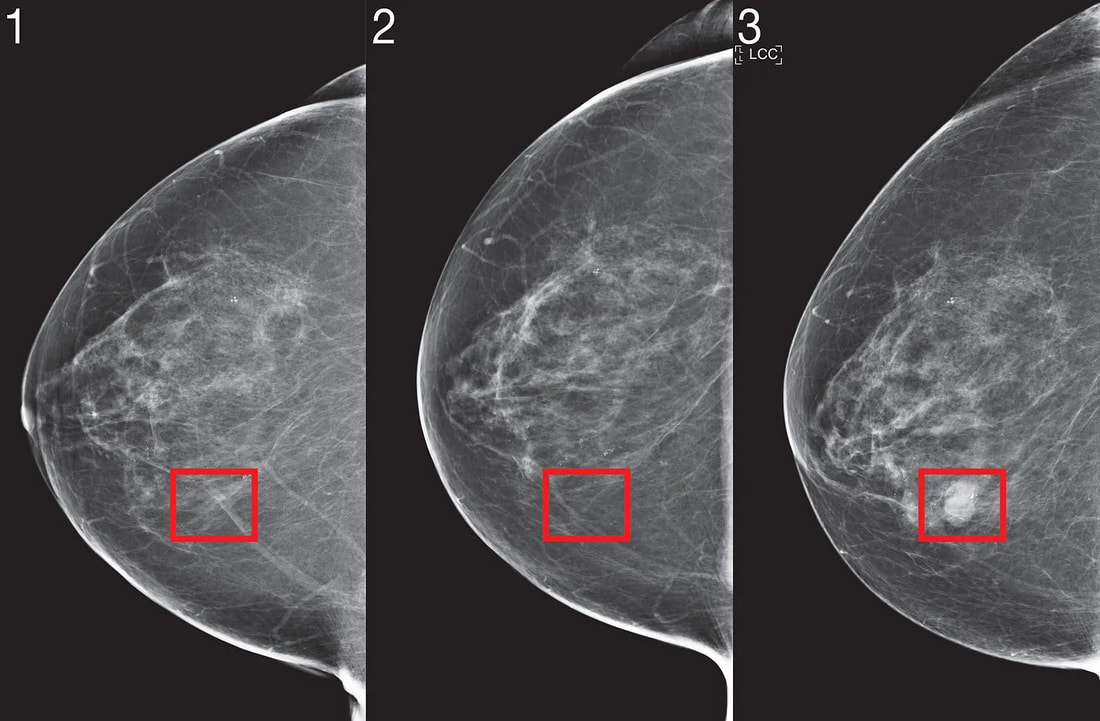|
Today, we will be discussing a topic near and dear to me: Breast Cancer. This is not a complete overview of all of breast cancers but an intro to helping anyone understand the epidemiology, screening, and risk factors for breast cancer. Breast cancer remains one of the most prevalent malignancies affecting women worldwide. Its epidemiology, screening modalities, and associated risk factors are critical areas of study and public health concern. Comprehensive understanding of these aspects is essential for early detection, effective treatment, and improved outcomes. In this article, we delve into the epidemiology of breast cancer, various screening modalities, the significance of family history, and other important risk factors. Additionally, we emphasize the importance of regular breast self-examinations, prompt medical attention for any concerns, and address the complexities of breast cancer during pregnancy. Epidemiology of Breast CancerBreast cancer is a multifactorial disease influenced by genetic, environmental, hormonal, and lifestyle factors. According to the World Health Organization (WHO), breast cancer is the most commonly diagnosed cancer and the leading cause of cancer-related mortality among women globally. The incidence of breast cancer varies across regions, with higher rates observed in developed countries compared to developing nations. Age is a significant risk factor, with incidence rates rising steadily with advancing age, peaking around 50 to 70 years of age. However, breast cancer can occur in younger individuals, underscoring the importance of early detection and screening initiatives. Screening Modalities for Breast Cancer Early detection through screening plays a crucial role in reducing breast cancer-related morbidity and mortality. Several screening modalities are available, including mammography, clinical breast examination (CBE), breast magnetic resonance imaging (MRI), and breast ultrasound. Mammography remains the gold standard for breast cancer screening, recommended annually for women aged 40 and older by organizations such as the American Cancer Society (ACS) and the U.S. Preventive Services Task Force (USPSTF). Mammography has demonstrated efficacy in detecting early-stage breast cancers, allowing for timely intervention and improved survival rates. Clinical breast examination, performed by healthcare professionals during routine check-ups, serves as a complementary screening tool to mammography, particularly in settings where access to mammography is limited. Breast MRI and ultrasound are adjunctive imaging modalities used in specific clinical scenarios, such as screening women at high risk of breast cancer or evaluating abnormalities detected on mammography. Importance of Family History and Other Risk Factors A family history of breast cancer is a well-established risk factor, indicating a genetic predisposition to the disease. Individuals with first-degree relatives (parents, siblings, or children) diagnosed with breast cancer have an increased risk of developing the disease themselves. Additionally, specific genetic mutations, such as BRCA1 and BRCA2, significantly elevate breast cancer risk. Other important risk factors include a history of radiation exposure (e.g., chest radiation therapy for Hodgkin lymphoma during childhood), previous breast biopsies demonstrating benign proliferative lesions, hormonal factors (e.g., early menarche, late menopause), obesity, alcohol consumption, and hormone replacement therapy. Breast Self-Examination and Prompt Medical Attention Breast self-examination (BSE) remains a valuable tool in breast cancer awareness and early detection. Women are encouraged to perform regular BSEs to familiarize themselves with their breast tissue and promptly report any new or suspicious changes to their healthcare provider. Although BSE alone is not sufficient for comprehensive breast cancer screening, it empowers individuals to take an active role in their breast health. Any concerns regarding breast changes, such as a palpable lump, changes in breast size or shape, nipple discharge, or skin abnormalities, warrant evaluation by a healthcare professional. Early diagnosis facilitates timely intervention and improves treatment outcomes. Bonus Topic: Breast Cancer during PregnancyNothing is more devastating than a diagnosis of breast cancer in a pregnant patient. Pregnant patients are already flooded with a myriad of emotions and challenges of the pregnancy itself and the calling of motherhood, making a breast cancer diagnosis, an emotional (and clinical) wrench in the gestational process.
Breast cancer diagnosis during pregnancy presents unique challenges due to concerns regarding fetal safety and treatment complexities. Delaying treatment in pregnant individuals with breast cancer is not advisable, as it may compromise maternal outcomes and jeopardize fetal well-being. Multidisciplinary management involving oncologists, obstetricians, and other specialists is essential to optimize treatment strategies while minimizing risks to both the mother and the developing fetus. In conclusion, breast cancer remains a significant public health issue globally, necessitating comprehensive strategies for prevention, early detection, and treatment. Understanding the epidemiology, screening modalities, and risk factors associated with breast cancer is crucial for healthcare professionals and individuals alike. By promoting awareness, encouraging regular screening, and fostering proactive healthcare-seeking behaviors, we can strive towards reducing the burden of breast cancer and improving patient outcomes. Eliel Arrey MD MBA Eliel Arrey, MD., MBA., is a health advisor, business advocate, entrepreneur, educator, and surgeon with a passion for Breast Oncology, Oncoplastic, and Cosmetic Surgery. History of Surgery series showrunner. He has been an educator for over 15 years and has vast experience teaching undergraduate students, nursing students, medical students, and resident physicians. Dr. Arrey is a physician at Grady Memorial Hospital in Atlanta and a Morehouse School of Medicine physician. He also serves as a faculty member at Kaplan, teaching Neurology and Surgery review courses to medical students worldwide. He is currently a PhD candidate in organizational leadership at Columbia International University. References:
0 Comments
In today’s fast-paced world, the prevalence of conditions like diabetes and prediabetes is steadily rising. High blood sugar levels not only pose immediate health risks but also increase the likelihood of developing severe complications over time. While medication plays a crucial role in managing blood sugar, incorporating natural remedies into your routine can complement conventional treatments and promote overall well-being. From dietary adjustments to lifestyle changes, here are some effective natural remedies for reducing blood sugar levels:
Check out our natural and scientifically proven remedies Eliel Arrey MD MBA References:
Smoothies have become a staple in the diet of health-conscious individuals, offering a convenient and delicious way to pack essential nutrients into one tasty beverage. But beyond their refreshing taste, smoothies can also be powerful allies in achieving weight loss goals. Packed with vitamins, minerals, fiber, and antioxidants, they not only support overall health but can also aid in weight management when incorporated into a balanced diet and lifestyle. Let’s delve into how smoothies can be a valuable tool in your weight loss journey.
In conclusion, smoothies offer a convenient and delicious way to support weight loss efforts while nourishing your body with essential nutrients. By incorporating nutrient-dense ingredients, practicing portion control, and staying mindful of your eating habits, smoothies can be a valuable tool in achieving your weight loss goals. So blend your favorite ingredients and sip your way to a healthier, happier you! Check out our Smoothie Diet for weight loss. Eliel N. Arrey MD MBA is an expert author, health advisor, business owner, and surgeon References:
The answer to there being a business case for quality in healthcare is a long, complex, and somewhat controversial one. Quality in health care as it pertains to optimal patient outcomes, safety, and efficient service are pivotal to patient centered care and one any human will agree to its improvement. On the same token, improving quality in health care is the fiduciary responsibility of all medical providers. So yes, we contend that there is a business case for quality in health care. The inability to truly quantify a positive financial return for quality improvement (QI) initiatives and the variety of reimbursement systems in healthcare are a couple of strong reasons why the business case for quality in healthcare is not as widespread as one would expect.1, 2 This short narrative will discuss how several issues in the healthcare business sector affect the business case for quality, and review a few suggestions of our own on why quality improvement programs in healthcare are more than just another expense but are programs that have a good return on investment that benefit all interested parties, with patients being at the forefront.
Singer Yolanda Arrey drops an Epic Anthem on 'The Essentials' from EA Music - Press Release4/21/2016 The Cameroonian-born singer known as Yolanda Arrey is a prominently featured artist on the new LP record from EA Music Group and mastermind musician Eliel Arrey. Yolanda Arrey happens to be the second Cameroonian-born talent holding nothing back as she steps unto the world stage on the track 'Your Highness.' The new long-playing album featuring Yolanda and other artists such as Nasomi, Steve Owner, and Melissa Otero, “The Essentials,” is available for download online [link provided below].
Early rumors of Yolanda's involvement in this full length album initially broke out in the February 2016 press release for Eliel Arrey's "End of Days" which listed her as a vocalist in EA Music Group. Eliel Arrey never responded to any comments in regards to the extend of Yolanda's collaboration and that was kept a mystery until now. Something that certainly was not a mystery then or now, is Yolanda Arrey, the singer. Described in an article as "Salt Lake City's finest," Yolanda is no novice to the music scene. She has been singing and writing her own songs since she was seven years old and is well known by many Cameroonians around the world. She cites Whitney Houston as one of her main artistic influences, a singer well known for her strong vocal presence, an attribute that marks Yolanda's own style. Another well known fact is her love for old school Jazz and Soul music. Her songs bring a soothing memory of what some would say 'real music used to be.' When asked about Yolanda, Eliel Arrey said "She is just too good. She gives her all into every song and her type of music definitely fits into what any would call the trademark 'Motown sound.'' Yolanda has been known to step out of the Jazz scene from time to time, making the idea of a collaboration with a near genre-free music composer such as Eliel Arrey not so far fetched. In December 2013, she collaborated with the acclaim rapper Prince of Cats on a Hip-Hop/Rap song titled "When You Loved Me." That magnificent piece was a success and garnered numerous audiences worldwide. 'Your Highness' is a track that demonstrates the evolution of both Eliel Arrey and Yolanda over the short courses of their musical careers: - On the one hand, we see that Eliel Arrey is not shy to step away from his traditional EDM zone that has celebrated him for so long. Nor is he shy to step away from the new symphonic scene that seems to be his new identity. He demonstrates, with emphasis, that he can walk into a brand new universe and still keep us dancing. Time after time, Eliel Arrey has shown us he is "...broadly varied [and] emotionally evocative." McCauley 2016. -On the other hand is the Diva in the room, Yolanda Arrey. Her works just never cease to amaze. Although she launches into the song with a soft and warm vocal, it does not take long for her to leap into her full range of strong natural tones and pitch perfect precision. The sweet, short, and catchy melodies of 'Your Highness' will keep many listeners hitting 'repeat' all year long. This song arguably might be this summer's most played anthem. Like everything else we are presented with on 'The Essentials,' it is world-class writer McCauley who describes it best: "With nearly every emotional hue coloring this striking example of unbridled innovation and musical alchemy, it's improbable that the music fan won't hear himself in it somewhere." McCauley 2016. “The Essentials” by Eliel Arrey from EA Music Group is now available online worldwide featuring Salt Lake City's finest, Yolanda Arrey on 'Your Highness.' https://itunes.apple.com/us/album/the-essentials/id1097226089 Website – www.elielarrey.com SUMMARY:
The Cameroonian-born singer known as Nasomi is a prominently featured artist on the new LP record from EA Music Group and mastermind musician Eliel Arrey. PRESS RELEASE: The Cameroonian-born singer known as Nasomi is a prominently featured artist on the new LP record from EA Music Group and mastermind musician Eliel Arrey. The new long-playing album featuring Nasomi, “The Essentials,” is already available for pre-order online [link provided below]. While Eliel Arrey's “The Essentials” has been garnering no end of attention from music lovers and game aficionados alike, Arrey himself stresses that Nasomi's performances are among the album's best qualities. “Nasomi is definitely an artist I'd like to emphasize on my album,” writes Arrey, who is renowned for writing evocative, highly narrative compositions. “She is the lead singer on 'Rise,' 'Brand New Day/Dance with Me,' and 'Sunset Love 2.0.' Nasomi has one of the most powerful voices of any artist I know. She has the ability to listen to any melody I write and complement it with the perfect vocals. She is masterful at conveying emotions through music. Her lyrics have touched many souls and have inspired many people, including me.” The Holland-based Nasomi cites as main artistic influences Toni Braxton and Aaliyah, two singers well loved for strong natural tones and a surgically precise pitch, both of which are marks of Nasomi's own style. “Nasomi is an artist who takes her music very seriously and is one of the most hardworking people I know,” says Eliel Arrey. “She sets goals and executes on them. She puts a lot of effort and dedication in all her work. She has never been it for money or fame, she just loves to sing and loves music!” Nasomi's first taste of fame came in 2012 when one of her underground singles, an original called “Whatever It Takes,” went viral on SoundCloud. Arrey heard the track and got in touch to suggest a collaboration. Today, he is proud to announce the three songs included on “The Essentials,” as well as several other tracks the duo will release later this year. Since 2011 The “Whatever It Takes” singer-songwriter has performed at various events in the Netherlands and Germany, as well as at the 2012 Esamba Esamba festival in Belgium. “The Essentials” feat. Nasomi by Eliel Arrey is available online for pre-order worldwide now. -S. McCauley Lead Press Release Writer www.MondoTunes.com “The Essentials” feat. Nasomi – https://itunes.apple.com/us/album/the-essentials/id1097226089 Website – www.elielarrey.com Music has always been influenced by cultures. Every society/culture has a unique style to their music and different instruments trademark some cultures. Our album, "The Essentials," is meant to draw music lovers from all backgrounds, cultures, and styles. Our listeners will sometimes notice our use of a variety of instruments not conventionally used in your everyday music. From Bagpipes playing the African Cameroonian National Anthem, or Kalimbas laying the down the verses in Far Cry, to our rendition of the violins and woodwinds of the Celtic Hills. The Essentials is going to take every listener on an international journey. We hope that all our listeners can feel and appreciate the diversity we sought after when we compiled this album. Our vocalists are nothing short of world-class, featuring the powerful Dutch star artist -Nasomi, Salt Lake City's finest -Yolanda, internationally acclaimed songwriter and engineer -Steve Owner, and the extended instrumental rendition of Melissa Otero's "Angels and Demons." Our listeners will also notice that "The Essentials" contains songs from a variety of genres such as New Age, Modern Classical, Electro House, Dance, Hip-Hop, R&B, Orchestral, and World. We ourselves had a hard time picking what genre to list the overall album under. We also pay special tribute to the life and memory of the great movie score composer, James Horner. The entertainment world still mourns the loss of this legend and there exist a void that can never be filled. Finally, we love the diversity of the tracks in the project as it symbolizes the diverse influences we have had in our lives and the different cultures that have influence us. Our goal is that everyone can find something they can relate to when they turn on this album. So much love and hard work has gone into this project, and it is our deepest honor to share this project with you and the rest of the world. Sincerely, Eliel Arrey & EA Music Group Tis the season for soccer. Put on your supporter jersey shirts, put on your game face, and put yours Hands Up High, its Brazil 2014.
REVIEWS
“This song was superb. I really liked the beat and the noise from the piano that was produced. I think the vocalist could be little softer as far as singing goes. The lyrics matched the tone of the music very well I wish there was some more harmony, maybe a second vocalist would be a nice touch to this song.” “The fermata and the falsetto of the introdcution have a good sytle. I like the tone of the rest in the melody and the compostion. The interval between two notes are good and I like the fifth form of the singer. His pitch is very dynamic and I like the range of his acoustics and the vocalist. The fourth of the fugue and the dynamics of the harmony make a good compostion. The energetic rhythm of the composition and the harmonics are interesting. i like the grave tune and the solo accordance. The impromptu decision of the harmony and the chord progression in the notes and the keys were alright. The hymn and the melody are glissando and the notes are alright.” “The intro is just so well performed that it has the biggest impact in the whole song. The tempo goes so well with the vibe of the song and it just makes you want to dance. The most well known artist is the very first to perform and have all of the character just to have a fresh, and original sound just to make the whole song very unique. The upbeat that they used in all of the verses and choruses are so wonderful and outstanding just to make the whole entire song just, more enjoyable and sound with a dynamic and with a lot of emotion relaxing. The challenging and creative side of the song is the instrumental, with the most wonderful background just to make the song very sunny. They have all of the right rhythm in there to not let the song get out of the right pitch. The artist has the greatest and most tuning natural voice that just makes him sing all of thosehighnotes.” |
Eliel Arrey
Official blog of Eliel Arrey Archives
April 2024
Categories
All
|






 RSS Feed
RSS Feed
